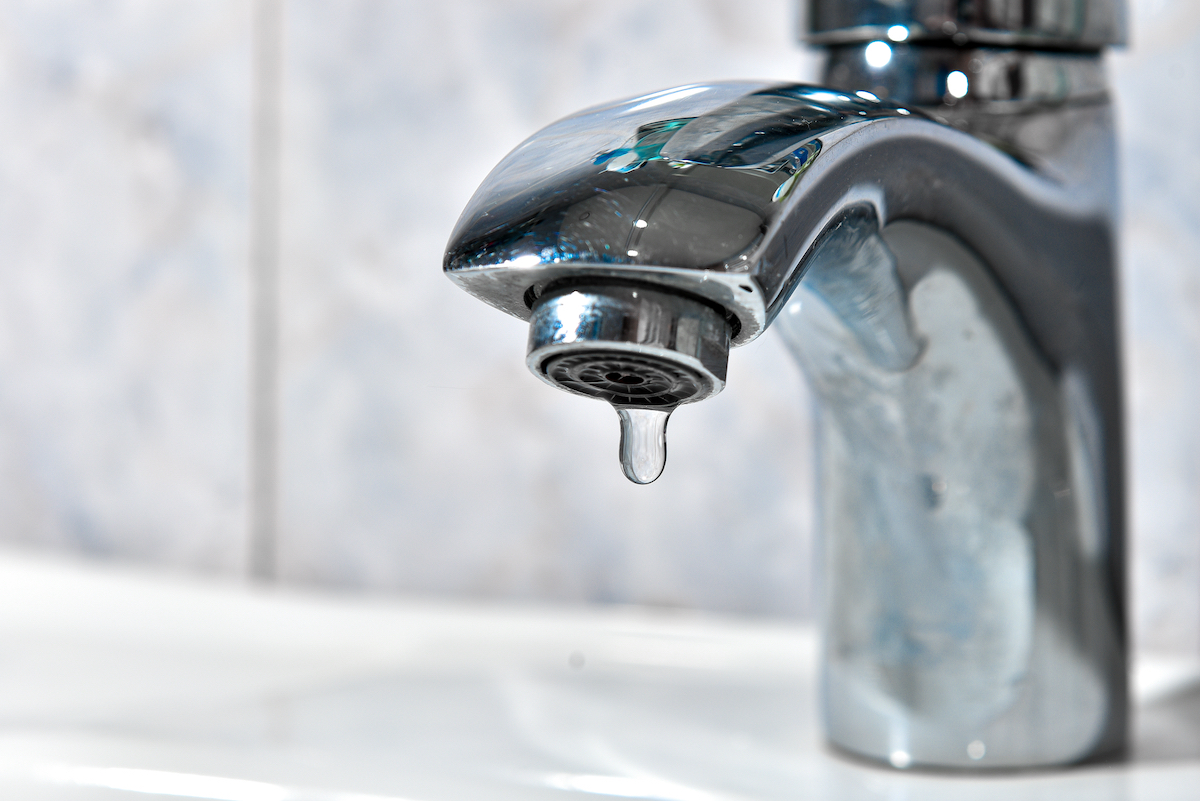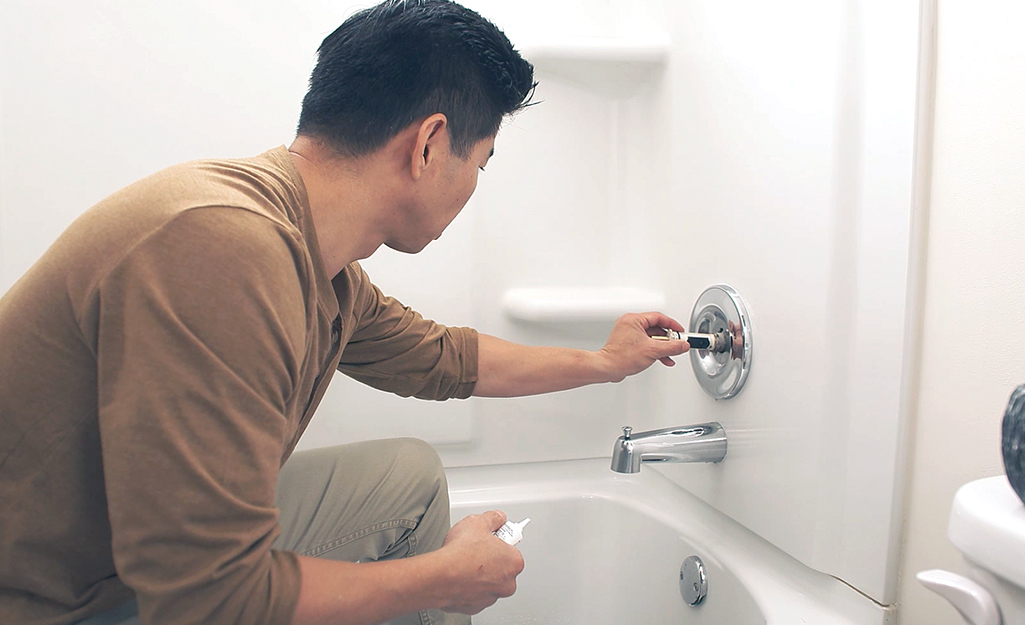Our Benefits of Dealing with a Dripping Faucet
Our Benefits of Dealing with a Dripping Faucet
Blog Article
They are making a number of great pointers on the subject of Why It's Important to Fix Leaky Faucets as a whole in this great article just below.

Trickling faucets may feel like a minor trouble, but their influence goes beyond just the aggravation of the audio. From drainage to incurring unnecessary monetary prices and health risks, neglecting a dripping faucet can result in different consequences. In this short article, we'll look into why it's important to resolve this typical home concern immediately and effectively.
Wastefulness of Water
Ecological Effect
Dripping faucets contribute significantly to water wastefulness. According to the Epa (EPA), a single faucet leaking at one drip per second can waste more than 3,000 gallons of water each year. This not only pressures water resources however additionally affects ecological communities and wildlife depending on them.
Financial Expenses
Raised Water Bills
Beyond the ecological influence, trickling taps can blow up water costs substantially. The built up waste gradually converts right into higher utility expenses, which could have been avoided with timely repairs.
Prospective Home Damages
Moreover, extended trickling can lead to damage to fixtures and surface areas bordering the tap. Water accumulation can trigger staining, rust, and even structural problems if left ignored, causing added repair costs.
Health Worries
Mold And Mildew and Mildew Growth
The constant presence of moisture from a dripping faucet produces a perfect atmosphere for mold and mildew and mildew growth. These fungi not just jeopardize interior air quality however also present health threats, especially for people with respiratory problems or allergies.
Waterborne Conditions
Stagnant water in leaking taps can come to be a breeding ground for germs and various other virus, increasing the risk of waterborne diseases. Contaminants such as Legionella germs flourish in stationary water, possibly bring about serious illnesses when consumed or breathed in.
DIY vs. Professional Fixing
Pros and Cons of DIY Fixing
While some might attempt to take care of a leaking faucet themselves, do it yourself repair services include their own collection of challenges. Without proper knowledge and devices, DIY attempts can worsen the concern or bring about insufficient fixings, prolonging the problem.
Benefits of Working With a Specialist Plumber
Working with a specialist plumber guarantees that the underlying reason for the leaking faucet is dealt with effectively. Plumbings possess the knowledge and equipment to detect and fix faucet problems effectively, saving time and decreasing the danger of further damage.
Step-by-Step Guide to Repairing a Dripping Tap
Devices Needed
Prior to attempting to deal with a dripping faucet, gather the required devices, consisting of a flexible wrench, screwdrivers, substitute components (such as washers or cartridges), and plumber's tape.
Typical Faucet Issues and Their Solutions
Determine the kind of faucet and the specific concern creating the drip. Typical problems include damaged washers, corroded shutoff seats, or malfunctioning O-rings. Refer to manufacturer directions or on-line tutorials for step-by-step support on repairs.
Preventive Measures
Routine Upkeep Tips
To prevent leaking faucets, do regular upkeep such as cleansing aerators, inspecting for leaks, and replacing damaged components promptly. Additionally, think about setting up water-saving devices or upgrading to more efficient components.
Relevance of Prompt Services
Resolving leaking faucets as soon as they're seen protects against additional water waste and potential damage, inevitably saving both water and cash over time.
Impact on Residential Property Value
Assumption of Well-Maintained Property
Preserving a residential property in good condition, including resolving maintenance problems like dripping faucets, enhances its regarded value and worth among prospective customers or tenants.
Impact on Resale Worth
Qualities with well-maintained plumbing fixtures, consisting of taps, command greater resale values in the realty market. Addressing dripping faucets can contribute to a favorable impact throughout property evaluations and settlements.
Ecological Duty
Specific Payment to Preservation
Taking duty for dealing with trickling faucets straightens with wider efforts towards water preservation and ecological sustainability. Every person's actions jointly make a considerable impact on preserving priceless sources.
Sustainable Living Practices
By prioritizing punctual repair services and adopting water-saving behaviors, people contribute to lasting living methods that benefit both existing and future generations.
Conclusion
Resolving a dripping tap goes beyond plain benefit; it's a vital action toward preserving water, reducing monetary prices, and protecting wellness and home. Whether via DIY repair services or professional support, taking action to take care of leaking faucets is a little yet impactful way to advertise liable stewardship of resources and add to a much healthier, more lasting future.
How to Fix a Leaky Faucet: Step-by-Step Repair Guide
A leaky faucet may seem like a simple annoyance, but if it's not fixed promptly, that leak could cost hundreds to potentially thousands. From water damage to mold, mildew, and high water bills, even a tiny leak can be catastrophic if left unattended. Damage like this can even affect the overall value of your home, so it's important to take the right approach for leaky faucet repair. You may need the help of a plumber in some cases, but we've got a few tips you can try on how to fix a leaky faucet before calling the pros.
Four Faucet Types
When you're learning how to fix a leaky faucet, the first step is knowing what kind of faucet you're working with! There are four common types.
Cartridge Faucets
Cartridge faucets come in one- or two-handled varieties. In one-handled cartridge faucets, hot and cold water combines in a single cartridge. In the two-handled versions, hot and cold water are controlled separately and mixed in the faucet.
Ball Faucets
Ball faucets have a single lever you push up and down to adjust the pressure and rotate to change the temperature. A slotted metal ball controls the amount of water allowed into the spout.
Compression Washer Faucets
They're the oldest type of faucet, but they're still used in many homes — especially older ones. Compression faucets have two separate handles that, when turned, raise or lower the washer that seals a water valve. This valve stops water from flowing through the faucet when it is turned off.
Disc Faucets
Disc faucets rarely need to be repaired due to their maintenance-free design. The water flow is controlled by two discs — the upper one raises and lowers against a fixed lower disc, creating a watertight seal. If your disc faucet starts leaking, you may need to replace the seals or clean residue buildup from the inlets.
Fixing a Leaky Faucet
Step 1: Turn Off the Water
Whether you're learning how to fix a leaky bathtub faucet or how to fix a leaky kitchen faucet, always turn off the water supply to your working area when you're fixing a leak. The last thing you want is a flood added to your list of things to fix.
Look for the shutoff valves below your sink or around the tub and turn them clockwise to stop the water flow. If your faucet doesn't have shutoff valves, you may need to turn off the water for the whole house. Check to make sure it's off by turning the faucet on. If nothing comes out, you're ready to start the repair.
Step 2: Take Apart the Faucet
How you disassemble your faucet depends on the type of fixture you have. You can use a flathead screwdriver to remove the caps on top of the handle or handles for cartridge and compression faucets. Inside, you should see handle screws. Unscrew these with a screwdriver to remove the handle.
Disc- and ball-style faucets will typically have an inlet screw near the handle, and removing that will reveal the interior of the faucet.
Detach the Valve Stem
For cartridge- and compression-style faucets, you'll see the inner valve stem or cartridge once you remove the faucet handles. If you have a compression faucet, unscrew the brass valve stem. If you have a cartridge faucet, pull out the cartridge. If your cartridge has been in place for a while, it may require some tools or extra force to remove it due to mineral deposits.
Examine and Replace Parts
Once you've removed the parts, check them out to confirm what needs to be replaced. You may see corroded rubber washers, O-rings, stems, or cartridges. On a ball-style faucet, check the seats and springs for damage.
If you need to repair a leaky disc faucet, check the inlet and seals on the lower disc.
Once you determine what parts must be replaced, visit your local hardware store. Bring the damaged parts with you to ensure you can purchase the correct components to replace them.
Clean Valves and Faucet Cavity
If you've removed a stem or cartridge, you may notice mineral buildup in the faucet's threads. Use white vinegar to clean the valve seat by soaking it for a few minutes, then scrub it away with a soft toothbrush and rinse with warm water. You can also clean the interior of the faucet in the same way.
Reassemble the Faucet
Once your faucet is cleaned and the required parts have been replaced, it's time to reassemble it. Put the pieces back together and slowly turn the water supply back on. Doing this slowly is crucial because too much initial water pressure can damage the new hardware you've just installed.
https://homewarranty.firstam.com/blog/how-to-fix-leaky-faucet

We had been made aware of that report on Should I Repair or Replace a Leaky Faucet? through a pal on a different web property. Make sure you pause to distribute this blog posting if you appreciated it. Bless you for your time. Return soon.
Report this page